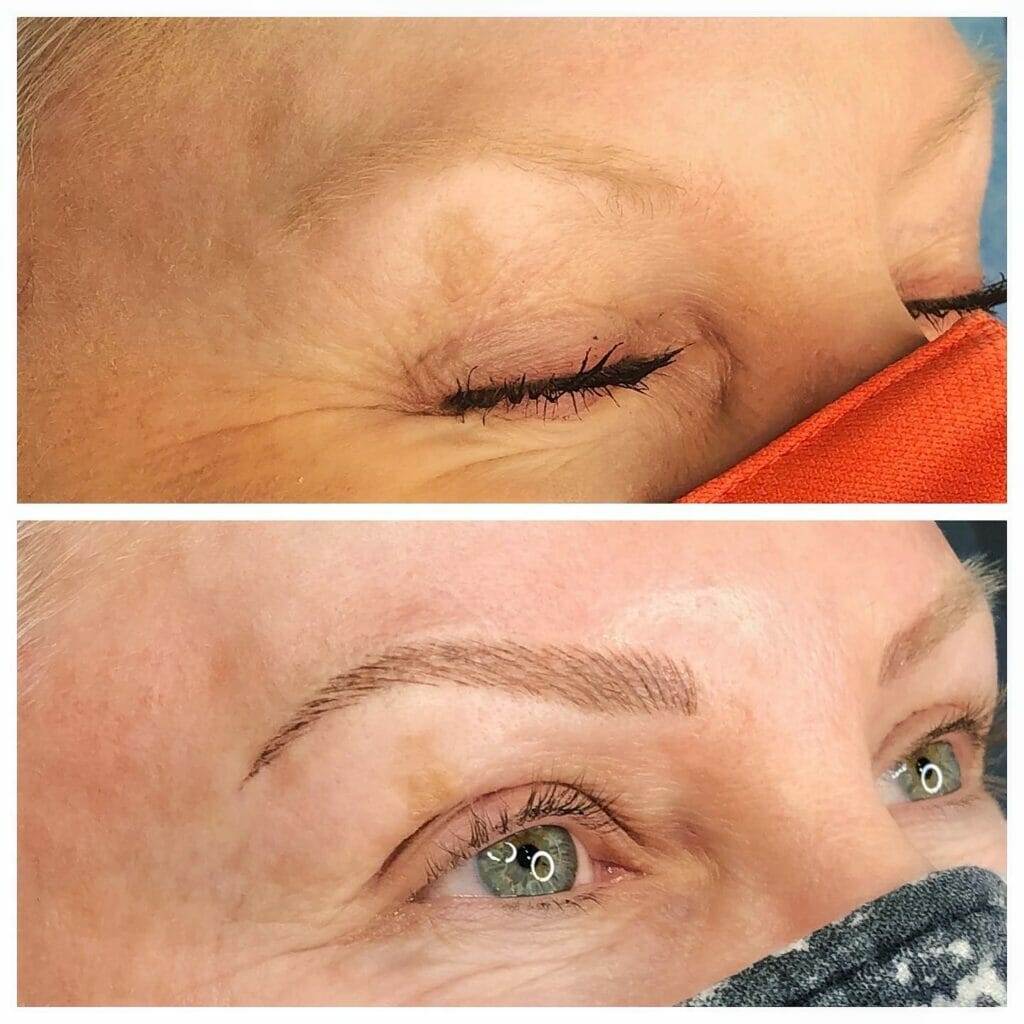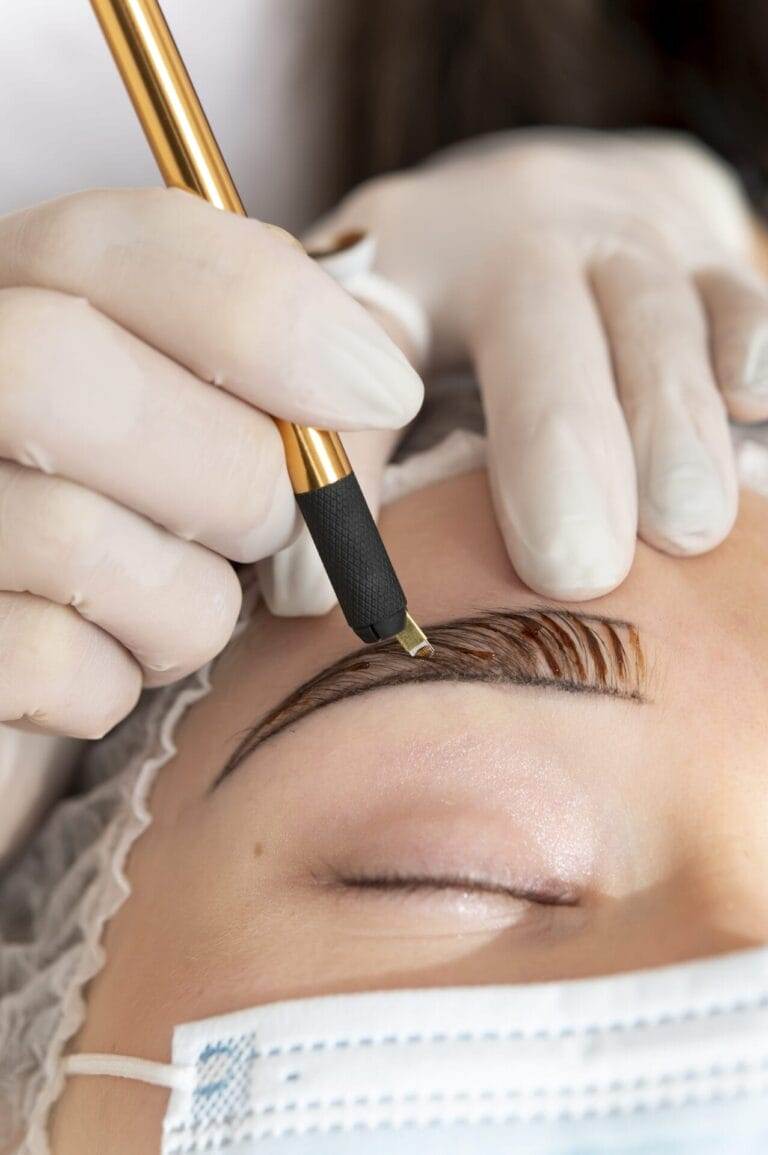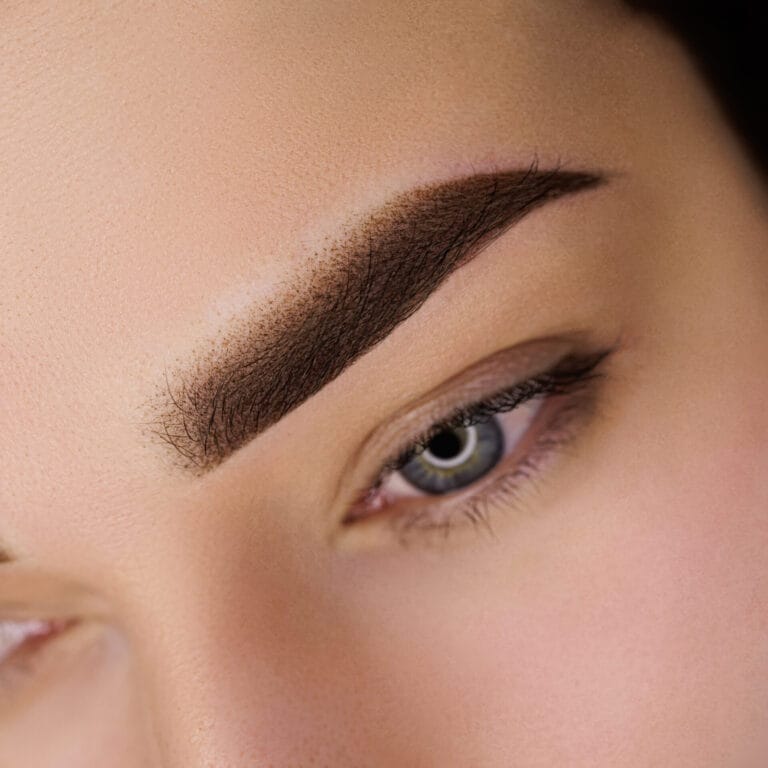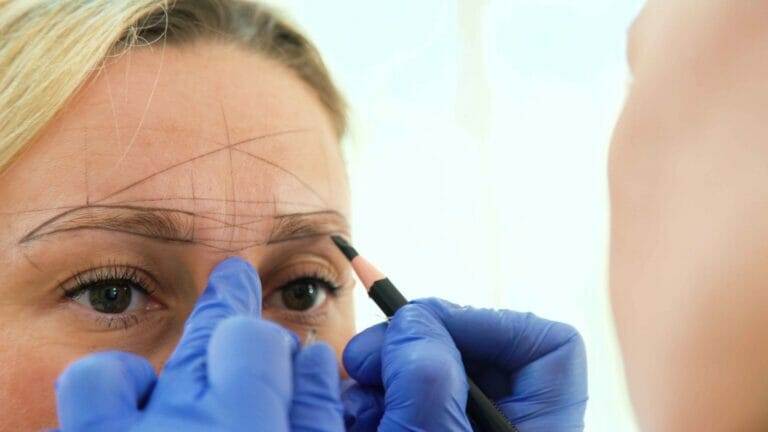Microblading is a semi-permanent makeup technique that involves the use of a handheld tool to create hair-like strokes on the eyebrows. It is a popular solution for individuals who have experienced eyebrow loss due to various reasons, including cancer treatments. Eyebrows play a crucial role in framing the face and enhancing facial features, so losing them can have a significant impact on a person’s appearance and self-esteem.
Cancer treatments such as chemotherapy and radiation can cause hair loss, including the eyebrows. This can be distressing for cancer survivors, as it can further contribute to the physical changes they have already experienced due to their illness. Eyebrow loss can make individuals feel self-conscious and affect their overall body image. Therefore, finding a safe and effective solution to restore their eyebrows is essential for cancer survivors.
The Impact of Cancer on Physical Appearance and Self-Esteem
A cancer diagnosis and treatment can take a toll on a person’s emotional well-being. The fear, uncertainty, and physical discomfort associated with cancer can lead to feelings of anxiety, depression, and low self-esteem. In addition to the emotional challenges, cancer treatments often cause visible changes in physical appearance, such as hair loss, weight fluctuations, and changes in skin tone.
Eyebrow loss is one of the common side effects of cancer treatments, and it can have a significant impact on a person’s self-esteem. Eyebrows are an essential feature of the face as they frame the eyes and contribute to facial symmetry. When eyebrows are lost, it can make individuals feel like they have lost an important part of their identity. This can lead to feelings of insecurity and negatively affect body image.
Microblading: A Safe and Effective Solution for Eyebrow Loss
Microblading offers a safe and effective solution for individuals who have experienced eyebrow loss due to cancer treatments. Unlike traditional eyebrow tattooing, which uses a machine to create a solid, permanent color, microblading involves the use of a handheld tool to create individual hair-like strokes. This technique allows for a more natural-looking result that mimics the appearance of real eyebrows.
One of the main benefits of microblading over other options, such as eyebrow pencils or powders, is its longevity. Microbladed eyebrows can last up to two years with proper care and maintenance. This means that cancer survivors can enjoy the restored appearance of their eyebrows without having to worry about daily makeup application.
Microblading is generally considered safe for cancer survivors, but it is essential to consult with a healthcare professional before undergoing the procedure. The artist performing the microblading should also be informed about the individual’s medical history and any ongoing treatments to ensure that there are no contraindications or potential risks.
How Microblading Works: The Procedure and Techniques
The microblading procedure involves several steps to ensure the best possible outcome. First, the microblading artist will consult with the client to discuss their desired eyebrow shape and color. They will then use a sterile, disposable handheld tool with fine needles to create hair-like strokes on the skin’s surface. The pigment used in microblading is specifically formulated for the eyebrows and is applied in layers to achieve the desired color intensity.
There are different techniques used in microblading, including feathering, shading, and combination techniques. Feathering involves creating fine, hair-like strokes that mimic the natural growth pattern of eyebrows. Shading involves adding more density and depth to the eyebrows by creating small dots or lines. The combination technique combines both feathering and shading to achieve a more defined and fuller look.
Choosing a skilled and experienced microblading artist is crucial for achieving optimal results. The artist should have proper training and certification in microblading techniques. It is also important to view their portfolio and read reviews from previous clients to ensure that they have a track record of successful outcomes.
Preparing for Microblading: What to Expect
Before undergoing microblading, clients will receive pre-procedure instructions from their microblading artist. These instructions may include avoiding certain medications or supplements that can thin the blood, such as aspirin or ibuprofen, for a few days before the procedure. Clients may also be advised to avoid alcohol and caffeine, as they can increase sensitivity during the procedure.
During the microblading procedure, clients can expect to lie down on a comfortable treatment bed while the artist works on their eyebrows. The artist will use a numbing cream to minimize any discomfort during the procedure. The entire process can take anywhere from one to three hours, depending on the individual’s desired outcome and the complexity of their eyebrow restoration.
After the procedure, clients will receive post-procedure care instructions to ensure proper healing and minimize any potential risks or complications. These instructions may include avoiding excessive sweating, sun exposure, and swimming for a few weeks after the procedure. Clients may also be advised to apply a healing ointment or cream to the treated area to promote healing and prevent infection.
The Benefits of Microblading for Cancer Survivors

Microblading offers several benefits for cancer survivors who have experienced eyebrow loss. One of the most significant benefits is the restoration of confidence and self-esteem. Having well-defined eyebrows can enhance facial features and provide a sense of normalcy and beauty for individuals who have gone through cancer treatments.
Microblading also saves time and effort in daily makeup routines. With microbladed eyebrows, cancer survivors no longer have to spend time filling in their eyebrows with pencils or powders every day. This can be especially beneficial for individuals who are still undergoing treatments or dealing with fatigue, as it simplifies their beauty routine and allows them to focus on other aspects of their recovery.
Furthermore, microblading provides natural-looking results. The hair-like strokes created during the procedure blend seamlessly with the existing eyebrow hair, creating a realistic and natural appearance. This is particularly important for cancer survivors who want to achieve a natural look and avoid the appearance of drawn-on or tattooed eyebrows.
Addressing Concerns and Risks: Safety Precautions and Aftercare
While microblading is generally considered safe, it is essential to choose a licensed and experienced microblading artist to minimize any potential risks or complications. A skilled artist will follow strict hygiene protocols, use sterile equipment, and ensure that the client’s skin is properly prepared before the procedure. They will also provide detailed aftercare instructions to promote proper healing and minimize any potential risks.
Some of the risks and potential complications associated with microblading include infection, allergic reactions to the pigment, and poor healing. However, these risks can be minimized by following proper aftercare instructions and choosing a reputable microblading artist.
Aftercare instructions typically include avoiding excessive sweating, sun exposure, and swimming for a few weeks after the procedure. Clients may also be advised to avoid picking or scratching at the treated area to prevent infection or premature pigment loss. It is important to follow these instructions carefully to ensure proper healing and long-lasting results.
Success Stories: How Microblading Restored Confidence and Beauty for Cancer Survivors
There are numerous success stories of cancer survivors who have benefited from microblading. These individuals have found renewed confidence and beauty through the restoration of their eyebrows. Microblading has helped them feel more like themselves again and regain a sense of normalcy after their cancer journey.
Testimonials from satisfied clients often highlight how microblading has positively impacted their self-esteem and body image. Many clients express gratitude for being able to wake up with perfectly shaped eyebrows every day without having to spend time on makeup application. They also appreciate the natural-looking results that microblading provides, as it allows them to feel confident and beautiful without drawing attention to their eyebrow restoration.
Choosing the Right Microblading Artist: Qualifications and Experience
Choosing the right microblading artist is crucial for achieving optimal results and minimizing any potential risks or complications. It is important to choose a licensed and experienced microblading artist who has undergone proper training and certification in microblading techniques. This ensures that they have the necessary skills and knowledge to perform the procedure safely and effectively.
When choosing a microblading artist, it is recommended to ask about their qualifications, training, and experience. It is also important to view their portfolio and read reviews from previous clients to get an idea of their skill level and track record of successful outcomes. Additionally, it can be helpful to schedule a consultation with the artist to discuss expectations, ask questions, and address any concerns before committing to the procedure.
Researching and reviewing potential microblading artists can take time, but it is essential for ensuring a positive experience and satisfactory results. By choosing a skilled and experienced artist, cancer survivors can feel confident in their decision to undergo microblading for eyebrow restoration.
Empowering Cancer Survivors Through Microblading
Microblading offers a safe and effective solution for cancer survivors who have experienced eyebrow loss due to cancer treatments. It can restore confidence and self-esteem by providing natural-looking eyebrows that enhance facial features. Microblading also saves time and effort in daily makeup routines, allowing individuals to focus on their recovery and well-being.
While there are risks associated with microblading, these risks can be minimized by choosing a licensed and experienced microblading artist and following proper aftercare instructions. By taking these precautions, cancer survivors can enjoy the benefits of microblading without compromising their health or well-being.
In conclusion, microblading is an empowering solution for cancer survivors who have experienced eyebrow loss. It allows them to embrace their beauty and confidence, knowing that their eyebrows are restored and natural-looking. By considering microblading as a solution for eyebrow loss, cancer survivors can take a step towards reclaiming their physical appearance and self-esteem.
If you’re interested in exploring other beauty enhancement options, check out this informative article on exotic facial piercings at Embellish PB in San Diego. While microblading is a fantastic solution for cancer survivors looking to restore confidence and beauty, some individuals may be interested in alternative ways to express themselves. This article provides a comprehensive guide to various facial piercings, allowing you to explore different avenues of self-expression. Read more





